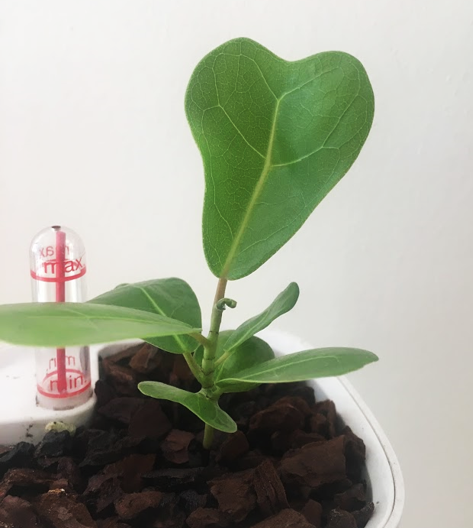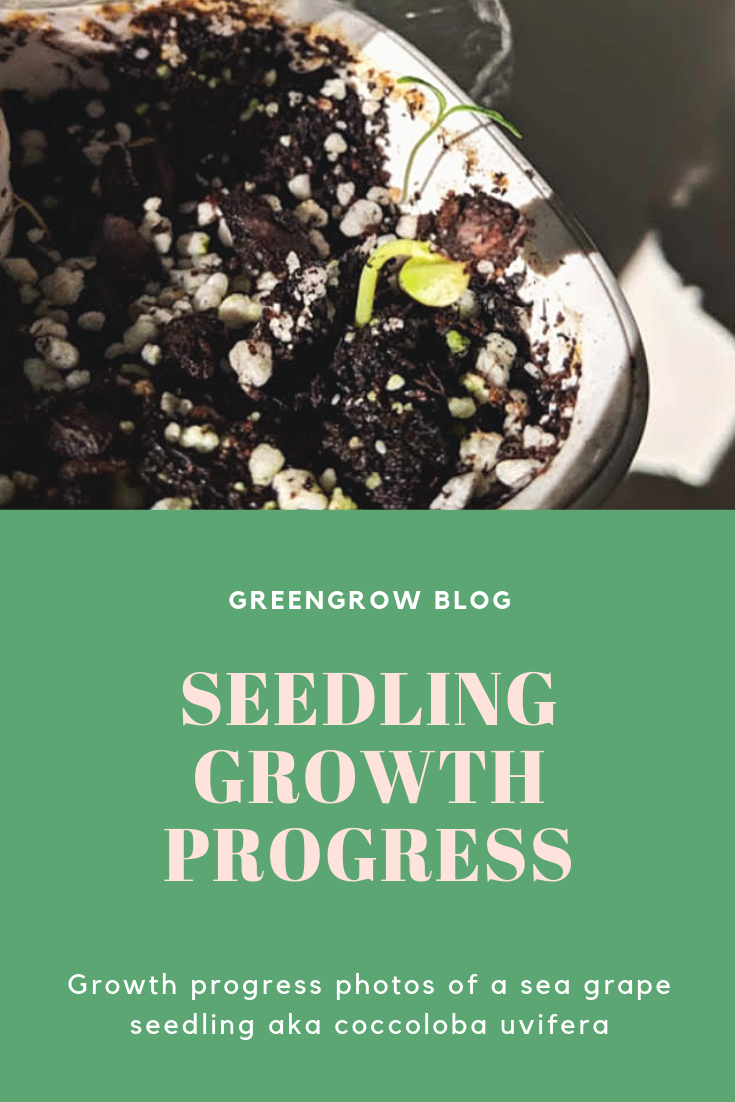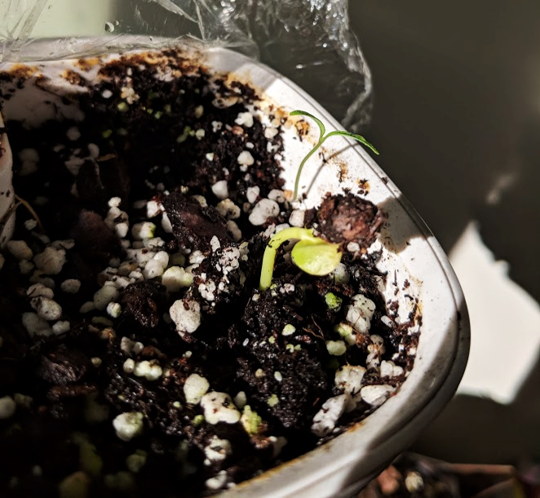This is part one of this story, if you want to see what happened next, see part two here.
Coccoloba Uvifera also know as the Seagrape, is common around the beaches of tropical America, characterised by it’s circular leaves and bright green, abundant grapes. As many plant lovers know, it is often a huge challenge to be able to acquire rare or foreign plants in certain areas. It is seemingly impossible to buy cuttings of in Europe so as a last ditch effort to get this plant, a seed was obtained from a seller on eBay. While of course this takes longer than obtaining an existing plant, it is of course incredibly rewarding to grow a plant from a seed. If you are wondering if it is possible to grow a seagrape plant indoors, we have done the research and can say that the answer is yes! In this post we show the growth progress of a seed so that you can get an idea of the coccoloba uvifera growth rate.
In case you haven’t seen this plant in all of it’s glory, here is an example below:
Ok so now you can see what all the fuss is about! It is a truly stunning tree and those grapes (which are edible by the way!) look truly striking on a healthy tree. So first thing was obtaining a seed, which we found online. If you are looking to buy your own, they are sold here
Before your seeds arrive you will need to do some preparation work:
- Get a self watering pot – these are the secret to success with seedlings, because any errors with watering can stress the seedling and cause it to die. Self watering pots help provide a consistent but gentle source of water to seedlings which helps them grow strong and steady. We recommend choosing a self watering pot which has a a visual measure so that you can easily see when the water is running low. You can get a self watering pot here
- Prepare your climate – if you live in a non tropical climate, you will need to recreate the conditions of a tropical climate to help the seedling in the beginning. We did this the DIY way by putting cling wrap over the top of the pot and propped it up with a stick.
- Get your soil ready – this plant usually lives in quite sandy soil, so you want to get a soil which has a sand mix in it. You can always make this yourself by mixing sand (available here) with a normal potting mix. If you don’t have any potting soil, you can buy some here
Once you have your seeds you need to prepare them before planting. You need to soak them in water for a few hours before potting them. We soaked for 3 hours.
After soaking the seeds, they can be planted in the soil. When you plant your seeds into the soil, make sure you push it down so that it is well covered by the soil mix – around 2cm is what we did. Then you can cover the put with your cling wrap and place it in bright light.
For this experiment we planted two seeds – only one was successful. So it is worth considering planting a few if you have them! The seeds were planted in mid July 2018, so it took about two weeks for signs of growth to appear, as you can see below.





2019
The first few months of 2019 didn’t have any particularly visible progress, this is most likely due to the lack of sunlight and cooler temperature over the winter months. It can be worrying to keep seedlings alive through their first winter, even indoors, but luckily this seedling made it. The first signs of new growth appeared in April








If you are interested in purchasing your own seedling, or other plants, see our regularly updated links to rare plants page.
If you like this story you might also enjoy:
Variegated Monstera Propagation





Amazing article! I was wondering what the normal duration is to grow a seagrape from a seed into a full plant. I see that you mention how your seagrape plant wasn’t growing at optimal speed. You mentioned that the enviornment wasn’t optimal and it slowed the growth. Is there a chance that if you had an indoor grow tent this could have grown faster? How much faster?
LikeLike
Hi! I’m not sure what the normal growth rate but I’m sure it’s slower because it’s not the ideal climate and amount of light. I covered it in a glass dome for a few months and noticed an immediate difference in the growth pace. Leaves seemed bigger as well! It’s grown too big for the dome so I will be purchasing a new one soon, and will update on all of the progress and lessons learned in my follow up post which should come soon! 🙂
LikeLike
Very nice. I’ve been trying to grow these from cuttings without success. The fruit has just ripened here so I’m going to try some seeds this week.
LikeLike
Interesting, I’ve always wondered if they could propagate. Good luck planting the seeds! I’d love to do a post on your growth once you’ve had a bit of progress if you are interested 🙂
LikeLike